If you are asked a question about what country has a flag with a mountain, what would be your first association? Nepal maybe? After all, this is the country that hosts 8 of the 14 eight-thousanders – the tallest world mountains – Everest, Manaslu, Lhotse, Makalu, Anapurnas (I & II) etc. and 70 peaks ranging from 5, 537m (Gokyo Ri) to 7,952 m (Gyuachung Kang). All those big killers are concentrated in the part of the Himalayas belonging to Nepal.
Alas, you would be wrong! Even though Nepal’s flag is the only one in the world that does not have a rectangular form, it features no mountains, because it is a mountain by itself. The triangular form of the flag is said to represent the shapes of the southern and the northern summits of Everest. As to the images of the celestial bodies, until 1962 the sun and the crescent moon representing the permanence and the hope had human faces, but they were removed to modernize the flag.
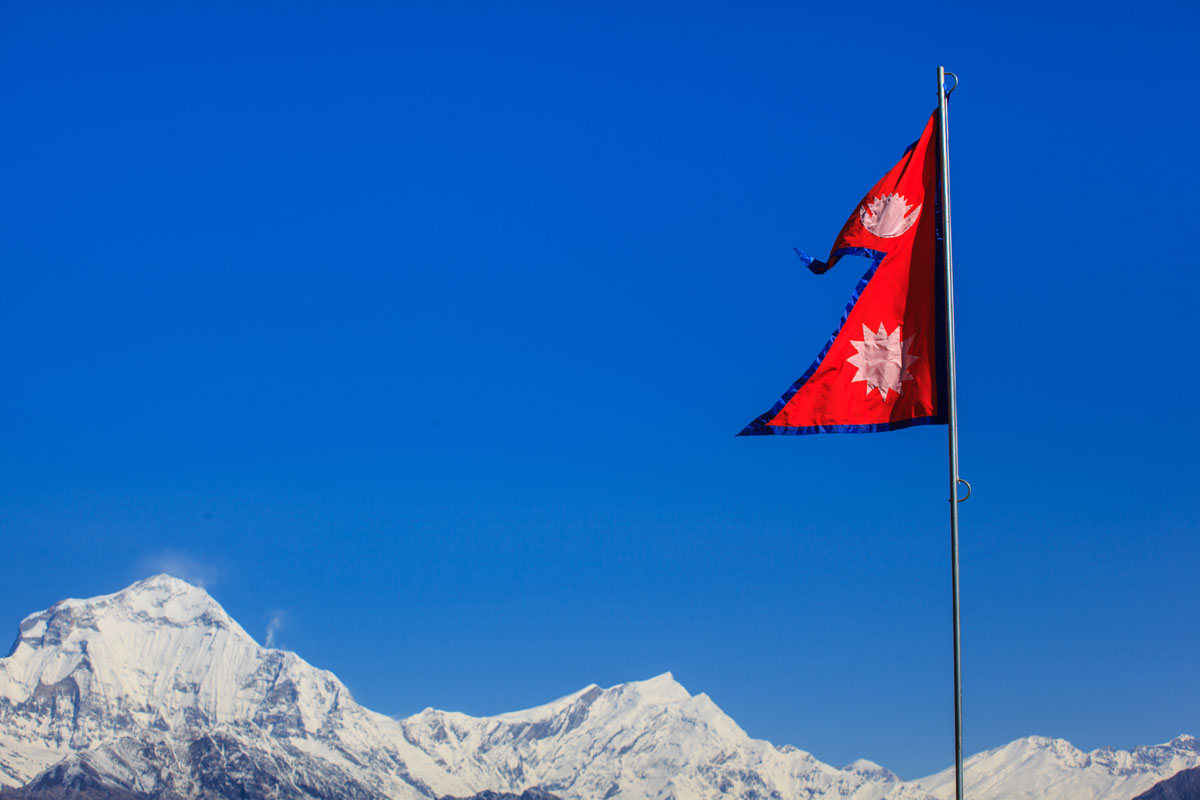
Is This a Mountain? Saint Lucia Quest
Well, it is actually two and much more! This is Saint Lucia flag last adopted on 22/02/2002 and the peaky shape you see stands for the Pitons - twin volcanic cones in the southwest part of the island - AND for the island surrounded by the blue sea and blue sky. The black and white allude to the harmonious relationship between the black and white races. The yellow symbolises the sunshine as well as prosperity.
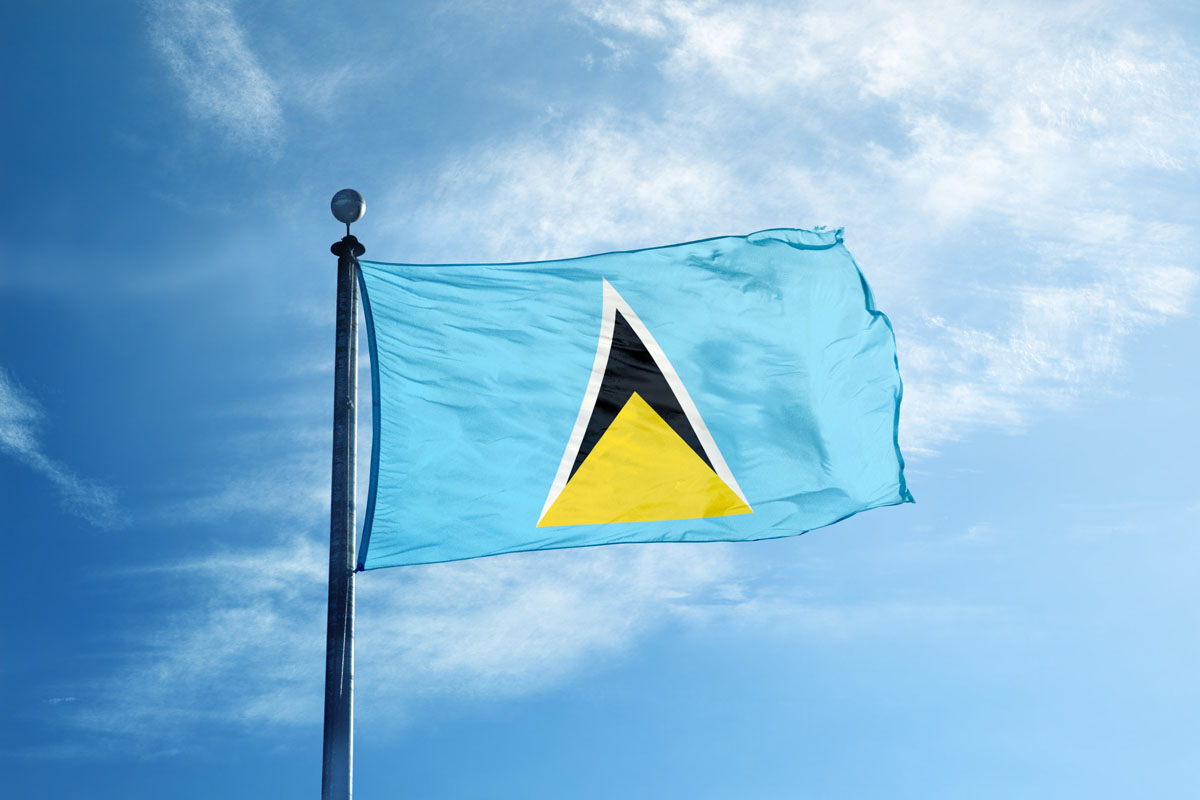
Gros Piton 798.25 m (2,618.9 ft) high, and Petit Piton is 743 m (2,438 ft) are a World Heritage Site for their abundant flora and fauna. The tropical moist forest grades to subtropical wet forest, with small areas of dry forest and wet elfin woodland on the summits. At least 148 plant species have been recorded on Gros Piton, 97 on Petit Piton and the intervening ridge, among them eight rare tree species. The Gros Piton is home to some 27 bird species (five of them endemic), three indigenous rodents, one opossum, three bats, eight reptiles, and three amphibians.
As to climbing, Gros Piton can be summited without ropes or mountaineering experience. One can hike to the summit and come back down to the sea-level within a few hours. Local guides are available for hire (typically through the resorts) and are trained by the government to have basic knowledge of the languages common among tourists and of the medical procedures required in case of common accidents.
No More Games: One Mountain per Flag
Ecuador
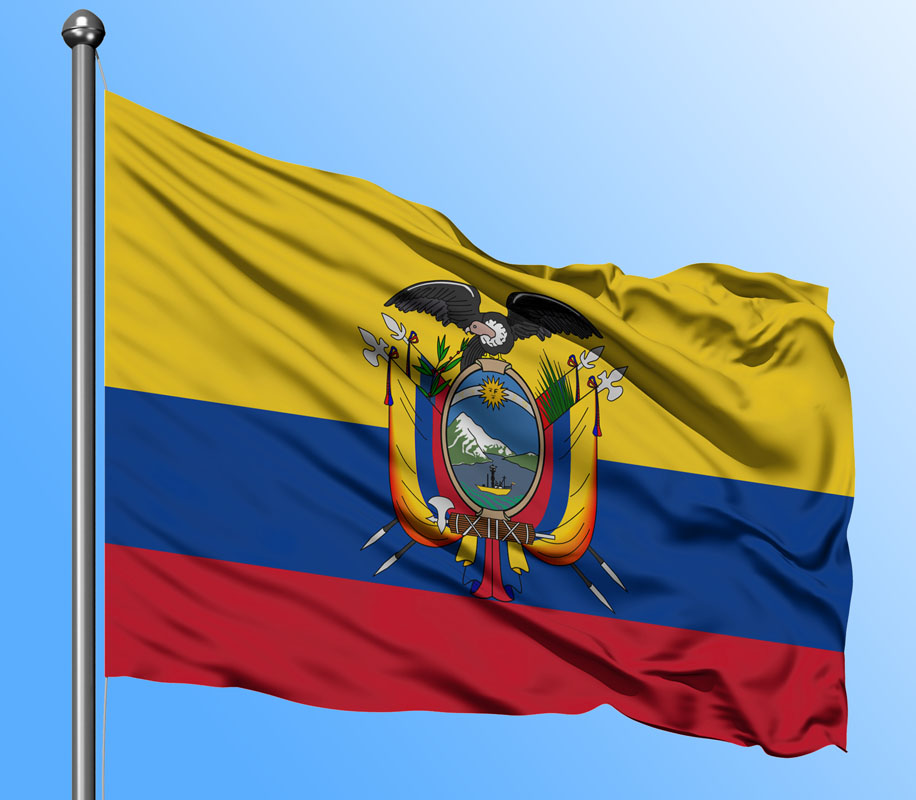
Is it enough to be the highest mountain to make it on the national flag? It seems yes for Ecuador. Even though the much-revered volcano Pichincha (4, 776m) has much more historical legacy and is the first mount many tourists to Ecuador see once landing in Quito, it is Chimborazo (6,310m) that first appeared on Ecuador’s flag in 1900, together with the river Guayas.
Ecuador’s flag has much going on. The first thing you see is the vibrant three colours: yellow for fertility, blue for the clear skies and the ocean, red for the blood spilt by national heroes for the sake of freedom of their country. The condor is stretching its wings to symbolize the power, greatness and strength of Ecuador. There is a Slavic superstition that if a bird makes poopoo on you, you are in for a lot of luck/money/fortune. I am just wondering whether it works for condors and if this magnificent bird drops something on you, will you survive?
There is also the first South American steamboat built in 1841. Instead of the mast, there is a caduceus (a magic warder with two snakes, usually used in medicine) that symbolise trade and economy of the country. On top of that, there is a golden sun surrounded by zodiac signs of Aries, Taurean, Twins and Cancer, they all cover the period from March to July - the length of the March Revolution of 1845. The palm stands for peace.
Bolivia
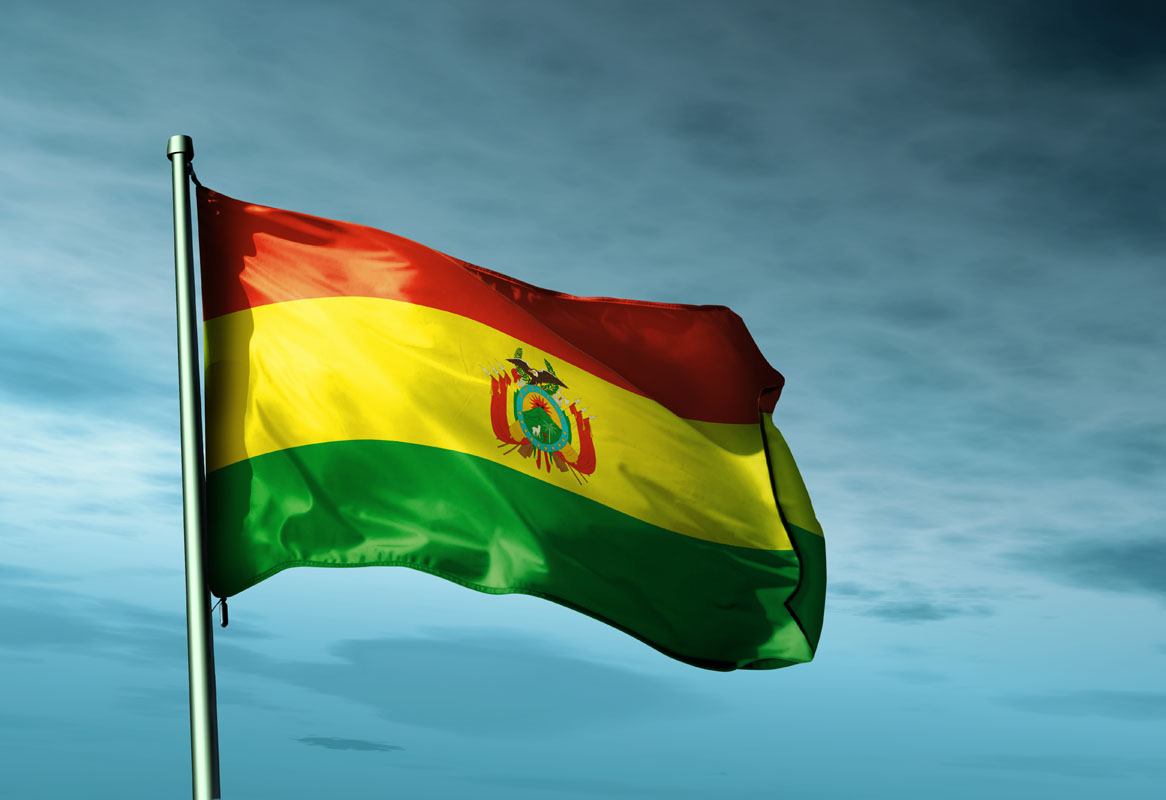
Ecuador had four banners, Bolivia has six. Both countries have a suspiciously identically looking condor impersonating power, greatness and strength. Both flags have laurel branches/palm trees and a sun. Bolivian llama is the national animal, related to the alpaca and the items next to it are symbolic of the resources of the nation. As to the colours, the blue is swapped for green to symbolize the fertility of the land, Bolivian yellow represents the nation's mineral deposits, and nothing changes for the red - this is the blood of the brave soldiers.
What is the mountain? It is Cerro Rico or Potosí mountain (4, 782m) or Sumaq Urqu (Quechua sumaq "beautiful, good, pleasant", urqu "mountain"), which is anything but human-friendly. It first gained nation-wide recognition in 1825, when after liberating the region around La Paz from the Spanish, Simon Bolívar climbed to the top of the mountain then known as Cerro Potosí and planted the flag of independence for the new country that now bears his name. Secondly, Cerro Rico is popularly conceived of as being "made of" silver ore, before its depletion in the 19th century, it was famous for providing vast quantities of silver for Spain during the period of the New World Spanish Empire. It is estimated that eighty-five per cent of the silver produced in the central Andes during this time came from Cerro Rico.
Should you wish to climb this notorious vulture that claimed many a life of hapless miners since the 1500s, you can do so any time of the year. Start of the highest city in the world - Potosi, and go 800m (2500ft) up. Round trip to the summit and back is approximately 4 hours via an infinite number of routes. Behold, there is a lot of scree and loose rock, so be careful. There are actually paths on the left side of the mountain as you look at it from town. On top is a weather station, often manned.
Which is Which? Find the Difference

But for the coats of arms, it would be nearly impossible to tell them apart. So, the flag devoid of any coat of arms is Russian. There is a house joke about its colours if you don’t remember their sequence: they stand for KGB = красный (red), голубой (blue), and белый (white).
Slovakia and Slovenia are both in Europe, but their gently sloping Alps (Julian, Kamnik, Savinja, Karavanke Alps) can hardly be called most prominent, especially when you see the neighbouring towering Pennine, Bernese, or the Graian Alps. Yet, those two small countries have produced great sportsmen.
Slovenia
Slovenia gave birth to Tomaž Humar, Tomo Česen and Marko Prezelj. A Slovenian team has recently made headlines by successfully completing the first ascent of the north ridge of Latok I (7,145m) in Pakistan, a route that had resisted all attempts for 40 years.
The highest Slovenian mountain that is featured both on the coat of arms and on the flag (adopted in 1991) is Mt. Triglav (2,864m) aka three-headed mountain, located in the middle of the Julian Alps and in the country’s only National Park.
Slovakia
Slovakia’s flag (adopted in 1992) has actually a graphic representation of three mountain ranges: the Tatras, the Fatra and the Matra, which historically were inhabited by the Slovaks and first appeared on the country’s coat of arms in the 13th century. Nowadays, the Matra belong to Hungary.
Slovakia can boast of 9 national parks and 14 protected landscape areas. The choice of mountains is also greate, there are the High and the Low Tatras, the Veľká Fatra and the Malá Fatra Mountain Ranges, the Štiavnické vrchy Mts., Javorníky. There are several scenic spots to enjoy great climbing. The mountainous village of Vernár belongs to the most visited places in Slovakia. There are four climbing sectors, each of them being specific. There are mostly lips, roofs, sometimes erect plates. The routes are evaluated by the UIAA scale and the names are written on rocks. The area is known to offer the possibility of climbing in cold winter months.
Another popular climbing area with a rich history is called Pajštún - the ruins of a castle near Bratislava. One small note, you should be careful climbing here because some tourists, when enjoying a good view, can drop stones from the top and you should also avoid climbing ruined castle walls. In autumn when the air is clean, you can even see the tops of the Alps.
The Holy Trinity
San Marino
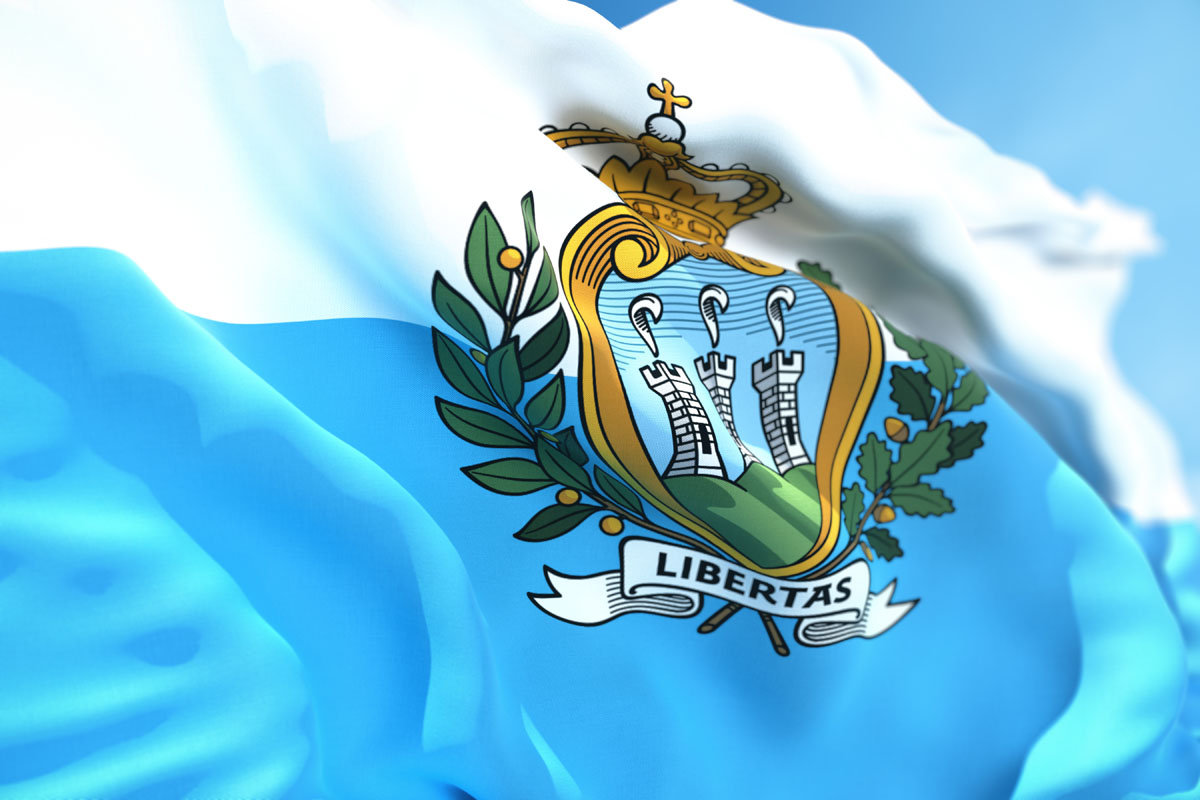
San Marino might be the fifth-smallest country in the world (61 sq.km) and totally enclosed by Italy but it is among the wealthiest countries in the world in terms of GDP. It also has its own mountain Monte Titano (749m) and no flatlands whatsoever. The country’s capital, the CIty of San Marino is located on the mountain top.
The current flag was adopted on 6th April 1862. Paradoxically, San Marino served as a refuge for many people who supported unification of Italy during the war for independence, but when the Italian general Giuseppe Garibaldi, who succeeded in unifying Italy in 1861, came to power, he accepted the wish of San Marino not to be incorporated into the new state. The inscription "LIBERTAS" can mean freedom and could also have developed from the alleged last words of the founder Marinus: "Relinquo vos liberos ab utroque homine" (Lat. "I leave you free from both men").
The summits represented on the flag and topped with the three towers adorned by ostrich feathers are the three summits of Monte Titiano. The towers stand for the three citadels, la Guaita, la Cesta, and la Montale, the earliest of which dates from the 11th century.
Costa Rica
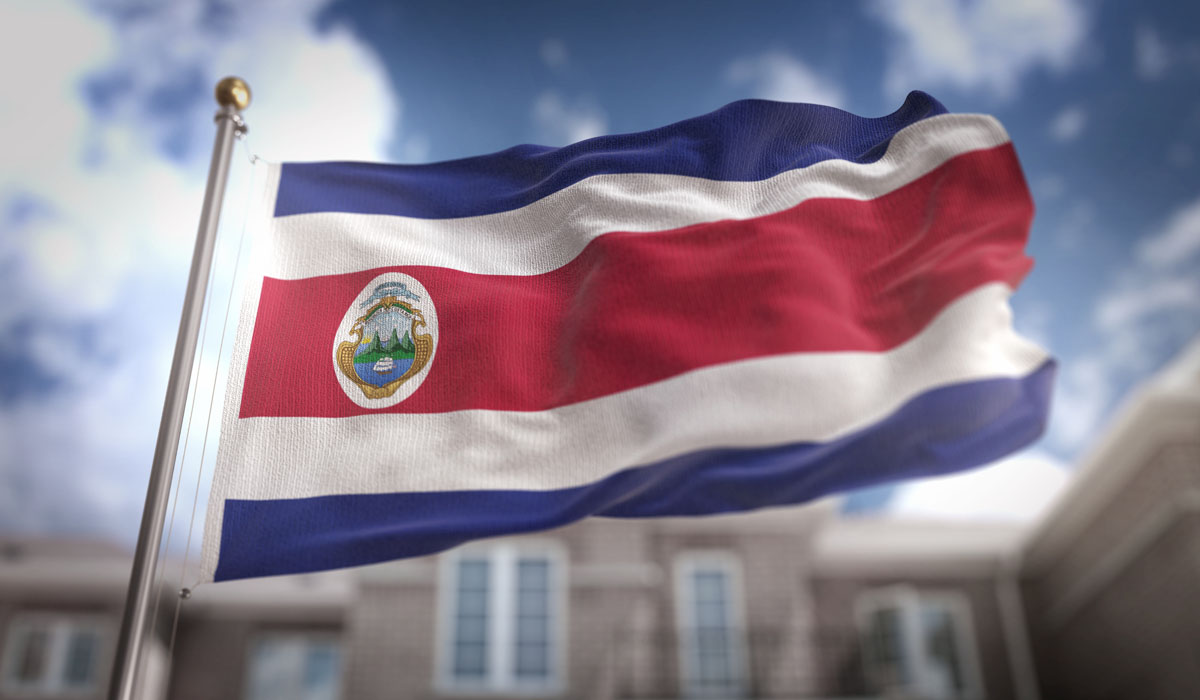
Costa Rica is snuggly tucked between the Pacific and the Carribean. Historically, the number of mountains shown on the flag varied. In 1824, there were five volcanoes rising out of the sea symbolizing the five member states of the United Provinces; above the volcanoes was a shining red Phrygian cap and a rainbow. In 1840-48, the mountains gave way to stars, only to return 150 years later in 1998 edition. Now there are three mountains representing Costa Rica’s three main mountain ranges (the Cordillera de Tilarán, the Cordillera Central and the Cordillera de Talamanca). As to the clouds covering the mountain caps, the heraldry connaisseurs just wanted to be true to the land, smoking mounts are a common sight in Costa Rica due to frequent volcano eruptions.
How Many Mountains Can Fit a Flag?
El Salvador
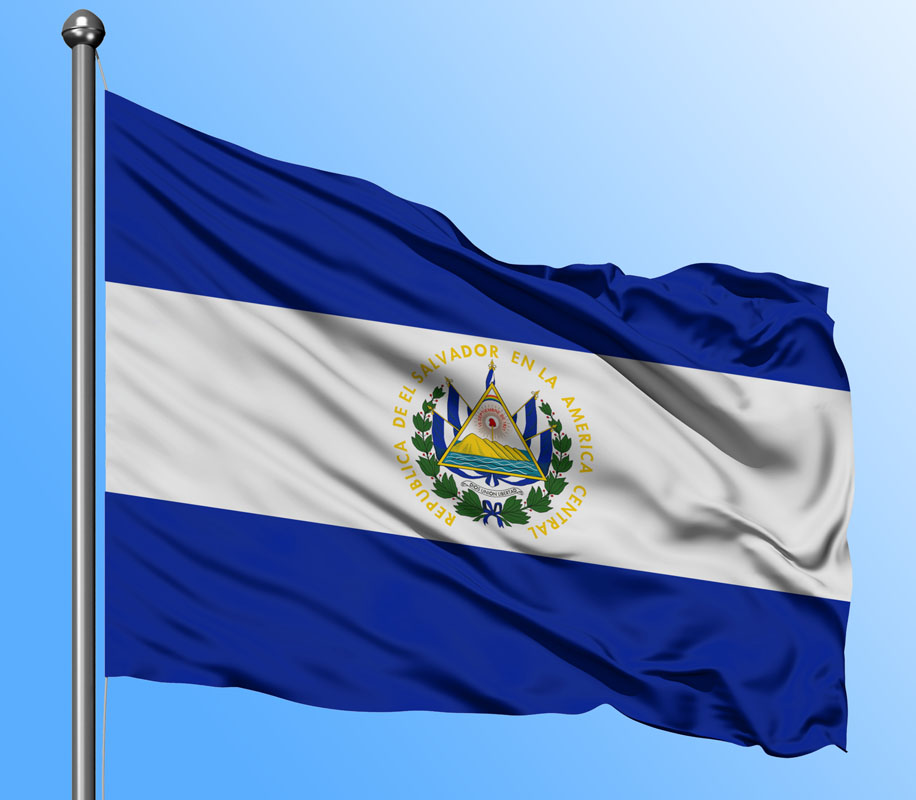
As many as you can draw. El Salvador’s flag was adopted in 1912 and also has volcanoes in it. In El Salvador’s case, these are five green, forested volcanoes lit by a rising sun and dominated by a Phrygian red cap. Initially, the picture was inspired by United Provinces of Central America now it also coincides with the five main peaks of the Cordillera de Apaneca range in the west of the country, whose five peaks are Santa Ana (the highest at 2,381m), Cerro Verde, Izalco, and the two summits of San Marcelino. 2,381m might not sound like much, but Volcano Santa Ana has four active craters, and it last erupted as recently as 2005. It produced a violent explosion of 1 hour, generating a 10 km high eruption column. 2 people were killed probably by a boiling lahar, and thousands evacuated.
If you are adventurous enough and have no sense of smell, go up Satna Ana in roughly a 4-hour road trip hike, which includes some time at the top to take in the views. The beginning of the hike goes through some flat areas, which are pleasant and relaxing before you hit the main ascent. As you’re nearing the top you’ll start to smell the authentic sulphur scent that oozes out of the volcano and when you finally get to the edge of the crater, dripping in sweat, it’ll all seem worth it. An eerie mist of steam simmers across the top of the crater lake, as the colours dance in the sunlight, switching between shades of turquoise, blue and green. But don’t be fooled by its alluring glow, especially when all you want to do is cool down, unfortunately, this is one crater lake you can’t swim in.
Nicaragua
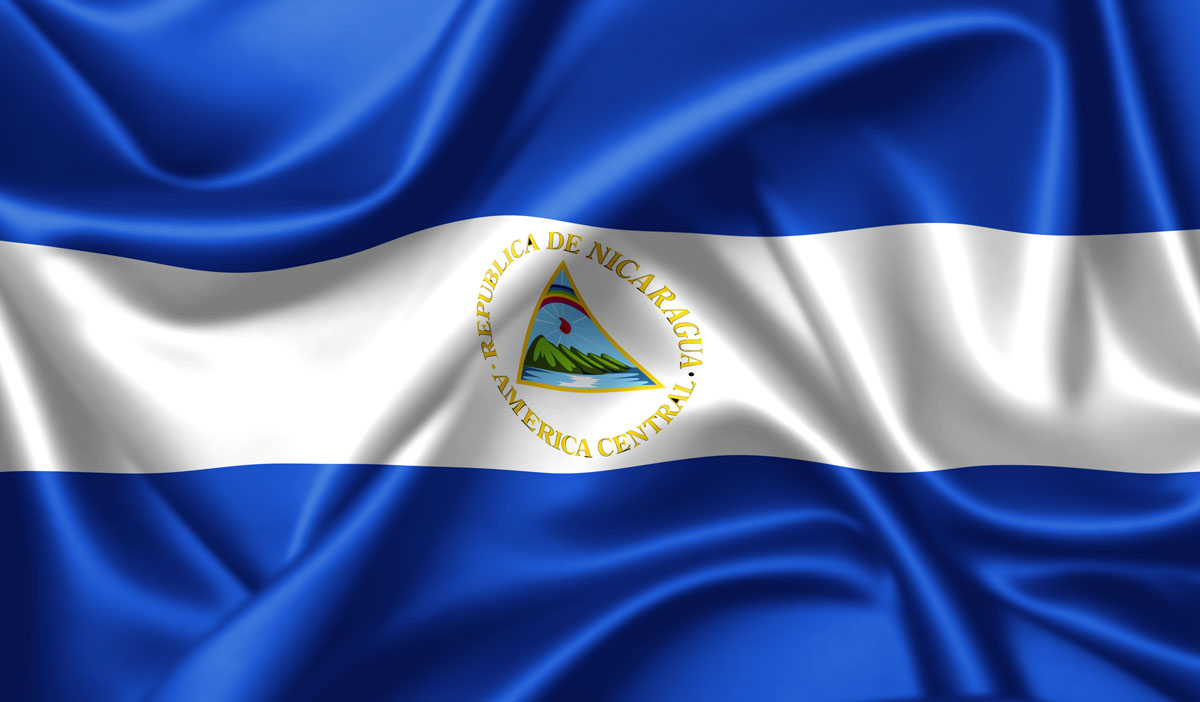
Well, the last but not least is Nicaragua’s flag adopted on September 04, 1908 (the latest edition was done in 1971). Principally, the five mounts meant the embodiment of union and brotherhood of Central American provinces of Guatemala, Honduras, Salvador, Nicaragua, Costa-Rica and Los-Altos as of 1823 - 1840, they came into independent existence after they broke free from The Mexican Empire. Some authors in the almighty internet claim it is wrong, there are 7 Central American countries now with Belize and Panama. But let’s be fair, historically there used to be five.
Nicaragua’s flag is also a rich compilation of symbols. The triangle means equality, the Phrygian red cap stands for freedom and rainbow is not about being merry or frolicky, it symbolizes peace.
That is all for the Flags-and-Mountains romance, yet, the research has proven coats of arms are definitely more prolific about the mountains, e.g. Hungarian tricolour flag seems pretty boring in comparison to its coats of arms with a three-capped mountain representing the Tatra, the Fatra and the Matra ranges.
Please tell us about your scenic travels and send some photos with mountains identified on flags! Have fun out there! And safe travels!
